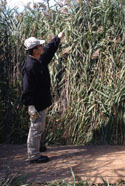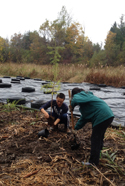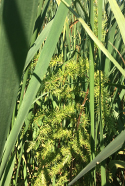‘Through ecological restoration we can restore our own connection to the natural world’
Vast forests once covered Southern Ontario and contained an immense biological diversity of plants and animals. These forests provided many environmental benefits and offered shelter and sustenance for the regions first peoples.
Today, 99% of that original old-growth forest has been cleared for settlement, industry and agriculture.
The ecological restoration of the Ignatius Old-Growth Forest Project is intended to recover the lands ecosystem health, integrity and to secure its potential for long-term sustainability. Not only does this process bring benefit to watershed health, habitat connectivity and bio-diversity conservation it also provides opportunity for people to learn about ecological concepts, restoration techniques and to engage with nature.
The project uses a combination of restoration practices that include natural succession, assisted natural regeneration and afforestation. An essential component of our restoration work, specific to this site, is the control of invasive plant species that include; European and glossy buckthorn, phragmites and garlic mustard. These out-compete native plant species during the successional stages of forest and wetland recovery.
Pictures – What phragmites look like; planting a tree in a phragmite remediation area; one year later, cattails growing alongside the tree that was planted
What we have achieved so far:
Since the conception of the project in 2006 Ignatius staff, in collaboration with volunteers, community groups, government and environmental agencies have made great strides. Here are some of our major achievements to date:
- The removal of the Ignatius dam to allow Marden Creek to flow freely to the Speed River
- Ecological assessment of the land and the production of the project’s restoration plan
- Cold water species such as sculpin and brook trout return to the Ignatius section of the creek
- Planting of the creek mudflats with sedges, grasses, wildflowers, trees and shrubs
- Reforesting the land by planting 11,000 native trees and shrubs
- Securing a conservation easement with the Ontario Farmland Trust which protects the land forever
- Ongoing removal of invasive plant species that include: European buckthorn, phragmites and garlic mustard


